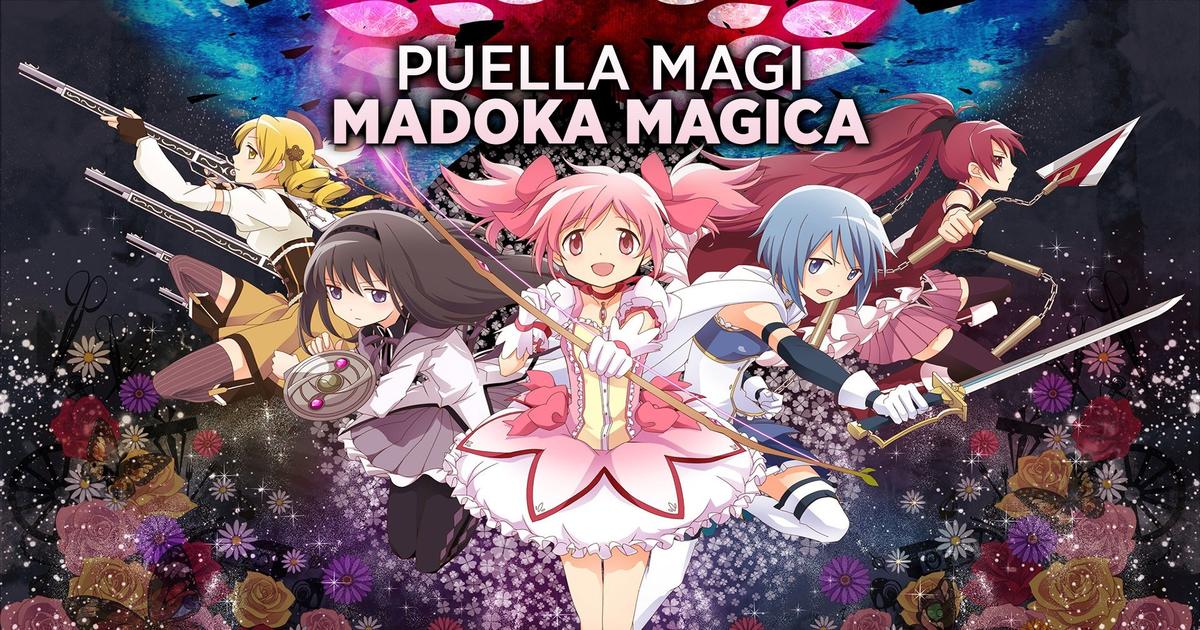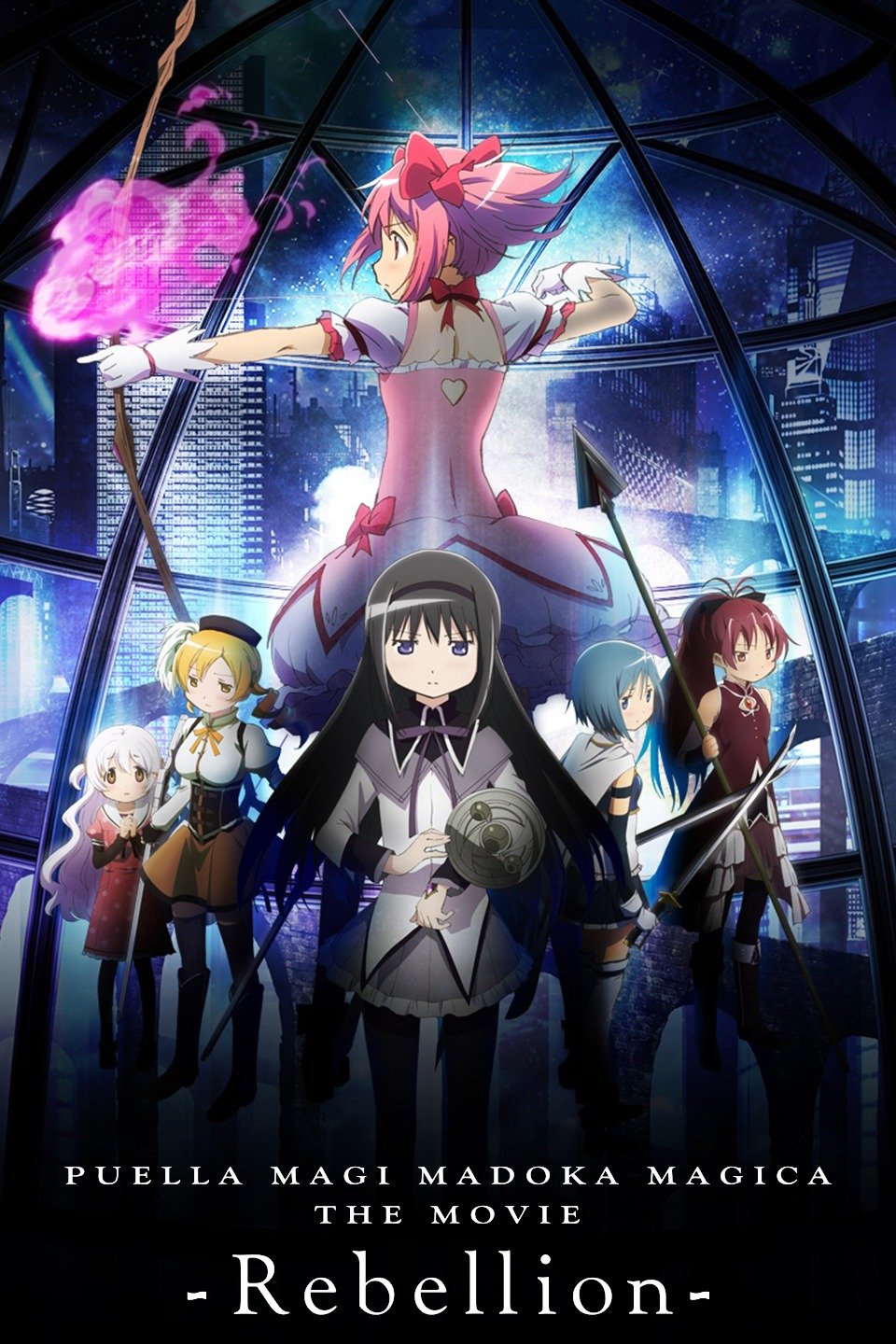Anime Spotlight #1 - Puella Magi Madoka Magica
Welcome, Weebotaks, to the Anime Spotlight: a new series where I take a look at a selected franchise, production studio, or completed anime that has particularly grabbed my attention. Today's selection, as indicated by the title, is Puella Magi Madoka Magica; a mouthful of a title for a franchise that (aside from its print sources, of course) is comprised of an anime series, three feature-length movies, a mobile game, and a promotional gaiden ("another" or "side" story) anime for said game, and several non-animated media, like stage plays. But since this is Anime Spotlight, I'm only going to be talking about things that are anime, so media like the game, manga, and stage plays will not be addressed here. Before we step into the Anime Spotlight, be sure to drop a like, comment, and tell your friends that the blog is back!
Puella Magi Madoka Magica doesn't look like everyone's cup of tea at first glance, what with the simple, egg-headed, lanky, cutesy character designs and equally cutesy voice acting that sometimes has that "let's go for the bad first take because I'm reading this in a booth by myself and trying to match animated lip flaps that were meant for another language" delivery to it. But in leaving one's preconceived notions at the door, one may have their mind blown. You might assume from half of the title having "Magi" in it that this is a magical girl anime, and you would be right. As is typical of the genre, an adorable animal mascot recruits young girls from various walks of Japanese life to become supernaturally powered warriors, defeat reality-warping monsters called "Witches" (who look like someone asked Hunter S. Thompson, Pablo Picasso, Max Fleischer, and M.C. Escher to design villains for a Paper Mario sequel, which is as psychedelically terrifying as it sounds) and save unwitting civilians from certain doom while working in secret. But Sailor Moon this most definitely is not. Madoka Magica begins with Madoka Kaname (the most Chekhov's Gun title character in anime history) having a dream about being a magical girl, in which she dies while fighting an extremely powerful Witch with the help of her friend, Sayaka Miki (a blue, fencing-inspired magical girl with music ambitions and an injured love interest), and a complete stranger named Homura Akemi (the mysterious, too-perfect, goth magical girl because black is mysterious and gothic). At school the following day, Madoka is shocked when Homura transfers into her class. Even stranger, Homura seems to know a lot about Madoka, and starts saying vaguely ominous things about fate even though the two of them had never met before. Later, Madoka and Sayaka encounter Kyubey (the "cute" animal mascot I mentioned earlier who looks like an albino version of that green rabbit thing from Digimon Tamers, but with soulless, red, button eyes), and they rescue him from the brink of death only to find that his attacker is...Homura? Yeah, you can tell already that this isn't your average magical girl anime. But if you've seen other deconstructionist series like Magical Girl Raising Project and My-HiME before, you can tell that Homura is attacking Kyubey for a reason, cuteness doesn't always equate to innocence, magic comes with a price or three, you must be careful what you wish for, and Witches...well, Soylent Green, Neon Genesis Evangelion, The Twilight Zone; pick your poison and make your guess, and you'll probably guess correctly. The escalating hopelessness, selfishness, psychosis, bloodiness, and darkness only serve to crush the average viewer's expectations into a finer paste with each passing episode (of which there are twelve in all) until a pleasantly surprising, creatively written ending upends everything once again. Constantly engaging, often disconcerting, and ultimately mind-blowing, Puella Magi Madoka Magica is one must-watch anime for the history books.The first two movies, subtitled Beginning and Eternal, are just big-screen recaps of the series proper, with some of the key character development scenes (like the opening dream sequence), lengthy establishing shots, and "extraneous" dialogue elements omitted for brevity. And if you know anything about story, you know that omitting key character development from an adaptation is bad. Perhaps if I had watched the films first, I might have had a better opinion of them. But as it stands, those noticeable omissions change a lot about the flow of the story's logic and how certain scenes feel when compared to the superior, longer form series. Skip them unless your own critical voice demands otherwise.The third film, subtitled Rebellion, serves as a sequel to both of the previous films and their superior source material. Madoka Magica: Rebellion opens in the alternate world that was created in the aftermath of the series finale. In the new reality, magical girl powers no longer come with a price, and the main characters (Madoka included, which will come as a surprise to those who watched the series) and former Witches work side-by-side to defeat a new class of monster called "Nightmares" (another surprise to viewers of the series, who were expecting to hear the word "Wraiths" instead). I'm trying really hard not to spoil very much because the payoff of PM3: Rebellion is a twisted mind-breaker worthy of its predecessor's subversive, dark insanity.
Magia Record: Puella Magi Madoka Magica Gaiden (I'm probably missing some Japanese articles and adjectives in there, but that's a sufficiently overlong title, so let's move on) is a promotional anime for the mobile gacha RPG, Magia Record, which didn't catch on here in the states because Dragon Ball, One Piece, and One Punch Man are cooler, I guess. It follows a new magical girl main character named Iroha who can't remember the wish that made her a magical girl and has hidden Witch powers because she's based on the player avatar of a mobile JRPG, and those always have amnesia and overpowered abilities for self-insert reasons. She also has a sister who only she knows exists, and so ends up blindly chasing "Rumors" (Witch-related urban legend phenomena) and teaming up with other new magical girl characters and a baby version of Kyubey to figure out why her sister is a paradox. On the way to never finding that out because "play our game" and "to be continued in Green Lantern 2...," Iroha and her definitely-not-an-RPG-party clash with a pre-series (?) Mami Tomoe (the yellow, gunfighter-themed mentor magical girl from the original series), Kyoko Sakura (the selfish, red magical girl with a three-part cane-spear from the original series--her origin story therein was surprisingly thought-provoking and sympathetic, by the way), and a cult of Witch-controlling magical girls with inconsistent and undefined motives beyond "we are the designated morally grey villain group." Engaging to a point--despite having almost no character development to speak of--and ambitious to the faultiest fault that ever faulted. Skip it.
Stay tooned for next week's Anime Spotlight, where I bridge the gap between magic and science with A Certain anime franchise.
Also, if you want to check out any of the anime I have reviewed so far, affordable streaming subscriptions can be found through VRV (Crunchyroll, HiDIVE, and Rooster Teeth), Funimation, Netflix, Amazon Prime, and Hulu. 👀
AniMeister,out.







Comments
Post a Comment